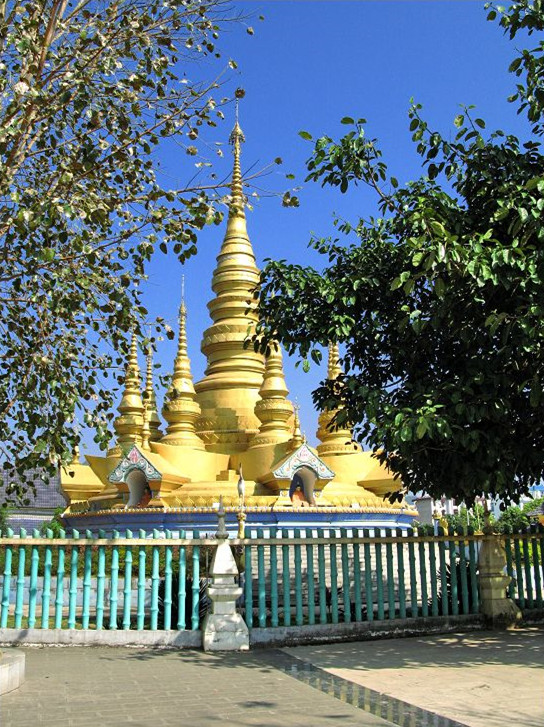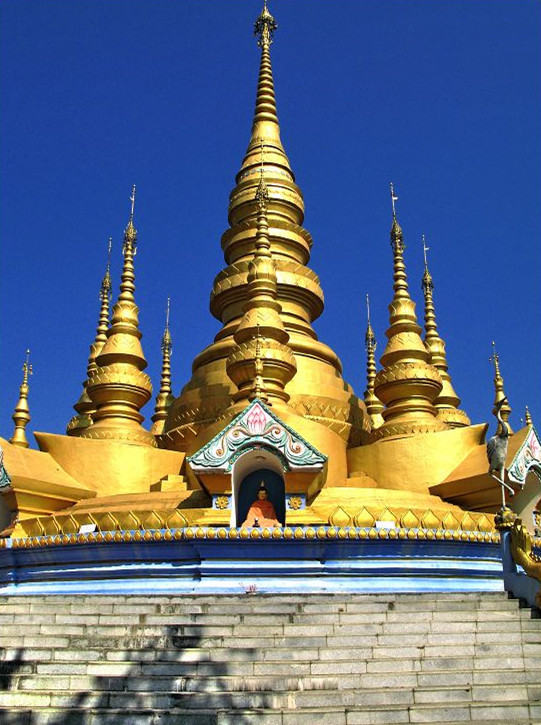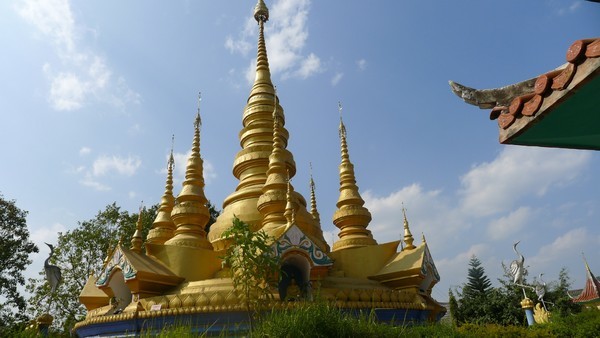Menglian Golden Pagoda in Puer
Chinese Name: 孟连县大金塔
English Name: Menglian Golden Pagoda in Puer
Address: Menglian County, Pu’er City
Introduction: The Dajin Tower, a striking golden pagoda, reflects typical South Asian cultural influences and Theravada Buddhism. Completed in April 1997, it consists of a central tower surrounded by 24 smaller pagodas. The main tower stands 31.6 meters tall, with each pagoda adorned with wind chimes. The chimes produce a melodious sound when the wind blows, believed by the Dai people to be celestial music, evoking a sense of a divine realm.
The Dajin Tower faces the Menglian Xuanfu Office Gate and symbolizes unity and progress among the people of Menglian. The Xuanfu Office, known in Dai as “He Han” meaning “Golden Palace,” complements the Dajin Tower, making it a prominent landmark in the region. It is the largest gilded pagoda in the province and adds a distinctive charm to Menglian.
Origin: The Dajin Tower’s creation is closely tied to the Menglian Xuanfu Office. Legend has it that the local people believed a pagoda should complement the “Golden Palace,” leading to the construction of the Dajin Tower. Upon completion, it harmoniously enhanced the grandeur of the “Golden Palace.”

Architectural Features:
- Construction Date: The pagoda, completed in April 1997, exhibits some Han cultural influences due to its relatively recent construction.
- Dragons and Cranes: The pagoda is surrounded by dragon sculptures in Han style, which is unusual for Dai culture. Additionally, cranes, symbolic of good fortune in Daoism, are included, though the peacock is the traditional auspicious bird in Dai culture.
- Buddha Statues: Inside the pagoda’s inner sanctum is a statue of Maitreya Buddha, a future Buddha in Mahayana Buddhism, indicating an integration of Mahayana concepts into the Theravada tradition.
- Wall Paintings: The inner walls feature scenes from Journey to the West, reflecting the influence of modern media and popular taste on traditional Buddhist iconography.

Auxiliary Structures: The pagoda is surrounded by four square pavilions, known in Dai as “Chi Ola,” meaning “pavilion for guidance.” Positioned at the four cardinal directions, these pavilions each house one of the Four Heavenly Kings:
- South: King of Growth, controlling the wind.
- East: King of Protection, managing order.
- North: King of Abundance, overseeing rain.
- West: King of Vision, ensuring harmony.
These guardians represent stability and prosperity, symbolizing favorable weather conditions and peace.
Visitors’ Experience:
- Outer Space: The pagoda’s structure is “solid outside and empty inside,” with the inner sanctum restricted to male visitors only.
- Spiritual Offerings: Outside the pagoda, visitors can tie strings to various Buddha statues, believed to prevent illness and bring good fortune.
The Dajin Tower is not only a place of spiritual significance but also a unique cultural landmark reflecting the blend of various influences and traditions.














